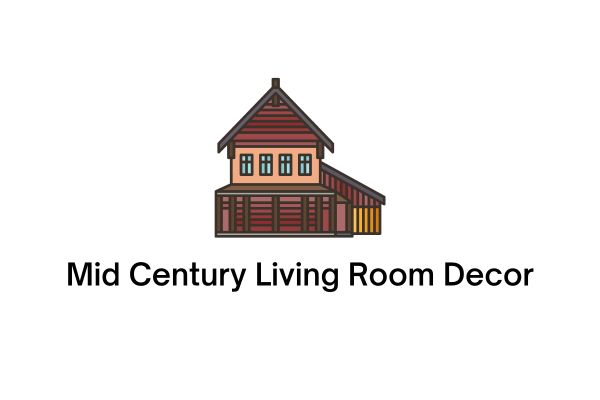Mid-Century Living Room Decor – The interior design of a mid-century modern living room basically has a large area and large windows for air circulation and sunlight. The colors that are often used in the interior design of this living room are warm colors such as wood brown, olive green, mustard, orange, yellow, gray and turquoise.
The decorations that must be displayed in this room are lamps such as chandeliers and light bulbs to create a dramatic impression in the room. Other decorations are ornaments that have geometric patterns or are like wool and knits.
If you are interested in implementing a mid-century modern living room interior design for your home. Check out the next 10 inspirations!
Daftar Isi
1. Living room interior design with brown furniture
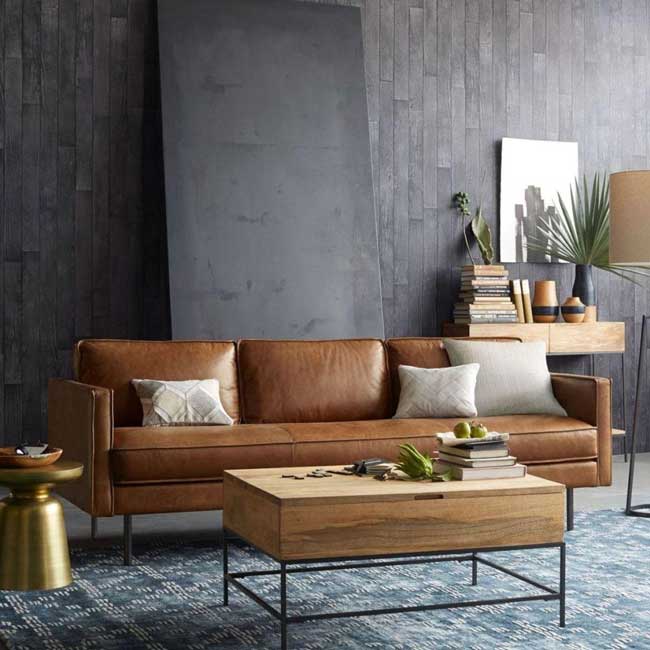
First, the interior design of the mid-century living room is dominated by brown furniture, such as sofas and coffee tables. The coffee table has a unique shape on the leg that forms a geometric pattern. Although the size of the coffee table is relatively small, the coffee table can be a focal point in the interior design of a mid-century modern living room.
2. Living room interior design with herringbone carpet
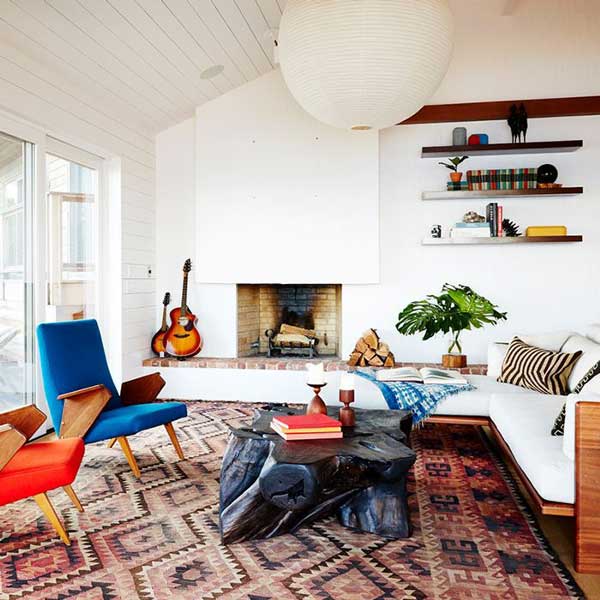
For a modern twist on the interior design of a mid-century living room, use a fluffy rug with a soft herringbone motif. Don’t hesitate to use 2 sofas of different shapes and colors in one room.
Since the rug is herringbone, you can use a coffee table that has nice curves like this. Add a chandelier in the corner of the room to light up your activities at night.
3. A living room that saves electricity
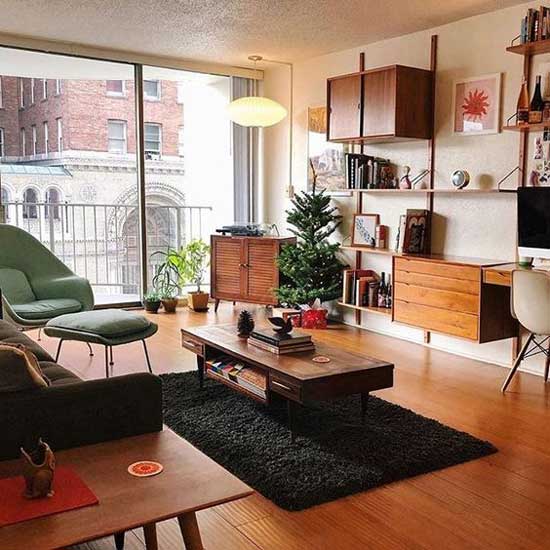
The main feature of the interior design of the mid-century modern living room is the large windows. The function of this large window is to make all corners of the living room appear bright due to the sun. Therefore, you can save electricity in the morning and during the day.
In addition, large minimalist windows can help you enjoy the front or rear garden without having to leave the house. In this living room interior design, you can add popular old furniture.
4. Living room interior design with a touch of blue
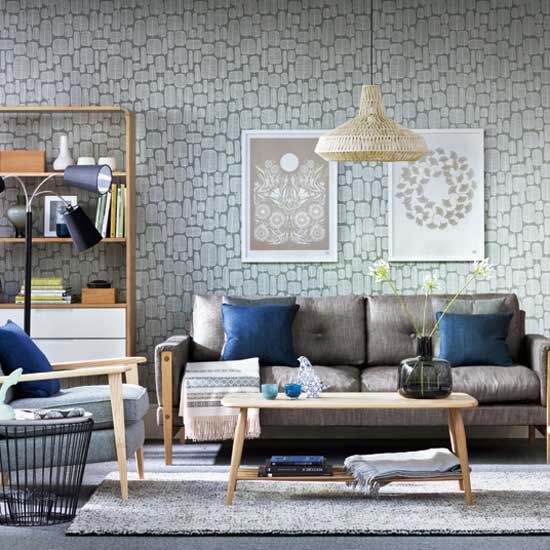
Brown color brings a warm impression, and blue brings a cheerful and soft atmosphere to the living room interior design. The white living room walls match the sofa and footrests.
5. Living room interior design with exposed walls.
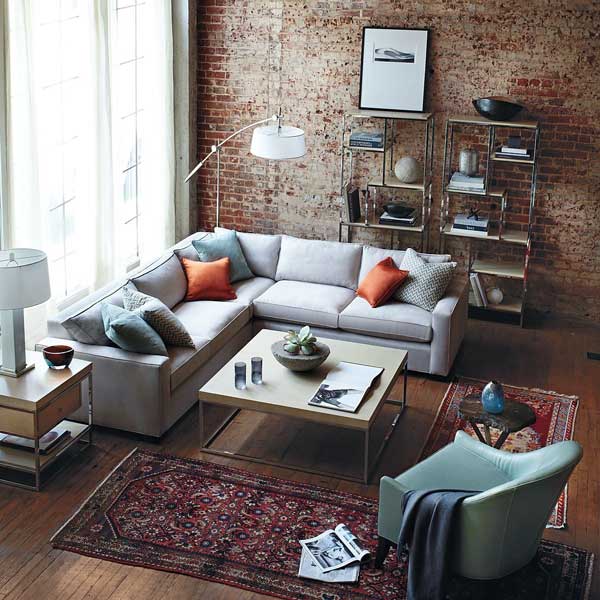
The focal point that will be seen when looking at the interior of this living room is the exposed brick wall. The atmosphere is warm and natural when paired with wooden furniture.
6. Warm living room interior design
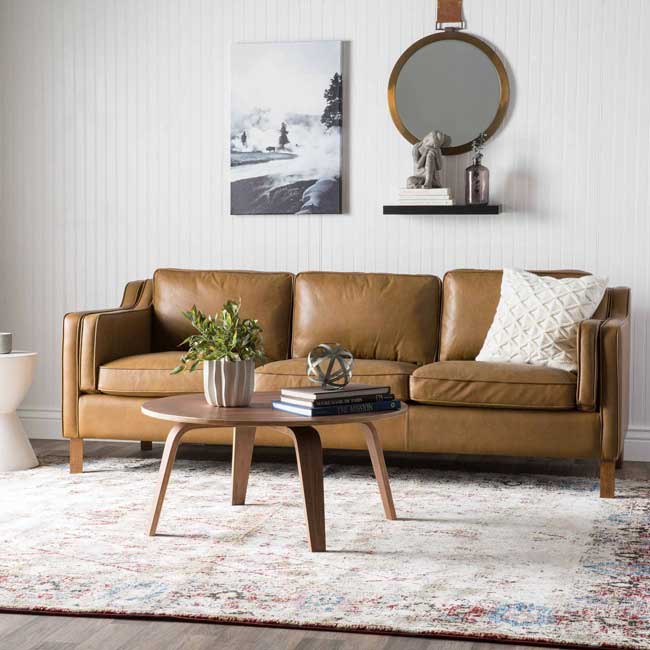
This mid-century modern living room looks warm with the presence of a medium-sized coffee table in the middle of the room and also a warm-colored sofa.
The soft light of decorative lights in the interior design of the living room creates a very cozy and warm atmosphere. The furniture is complete, don’t forget to spread the short and soft carpet so that when many guests come they can freely sit on the carpet.
7. Living room interior design with a touch of black
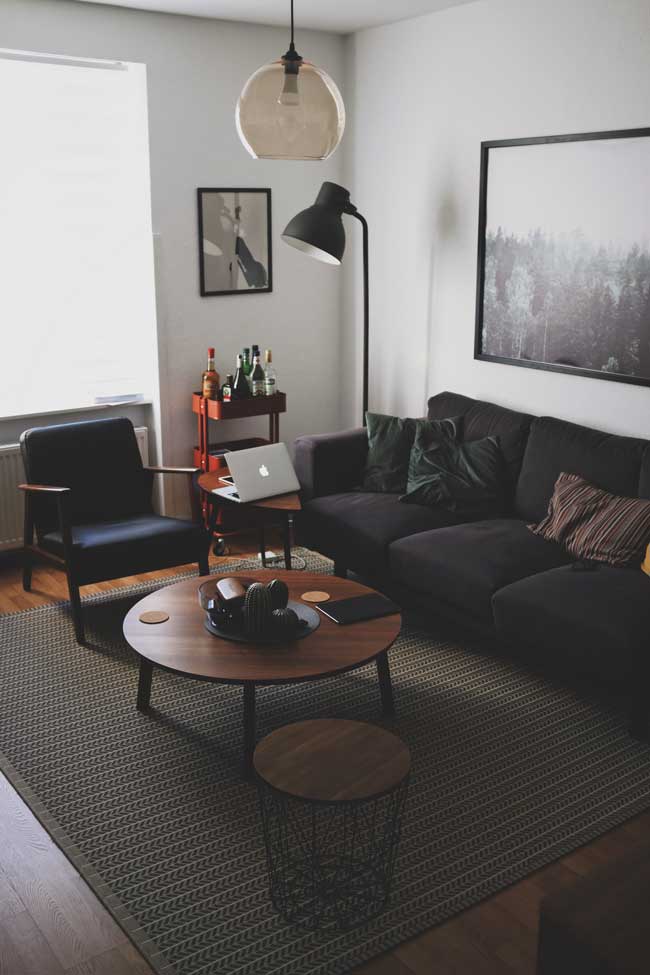
Mid-century modern living room interior design is also fine to use all black. For example, the interior design of this living room. You can use a black accent on one of the sofas. A thick rug with black and white stripes also you can use.
8. Living room interior design with simple configuration.
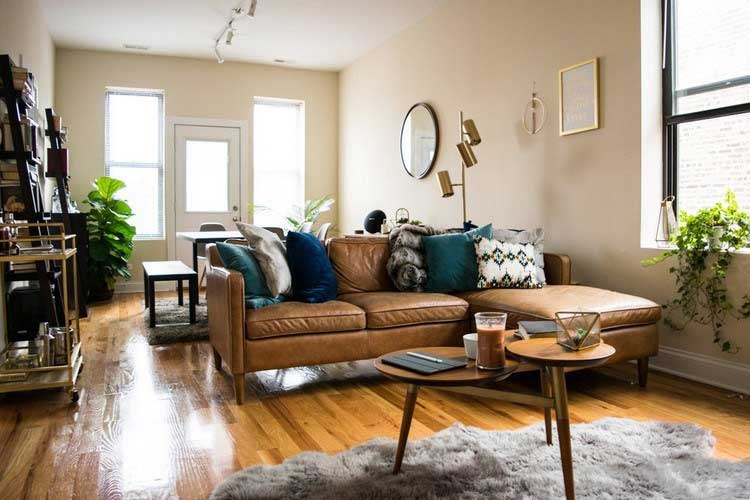
In general, mid century living room decor and design applies to large dimensional houses. But if you don’t have it, you can still apply the interior design of the living room to a small house.
Choose the right size of furniture for your room. Next, determine the focal point of the living room as a multi-story coffee table and use a pillowcase in a contrasting color. If you want to use a rug, just use one that doesn’t exceed a quarter of the living room.
9. Bright living room interior design
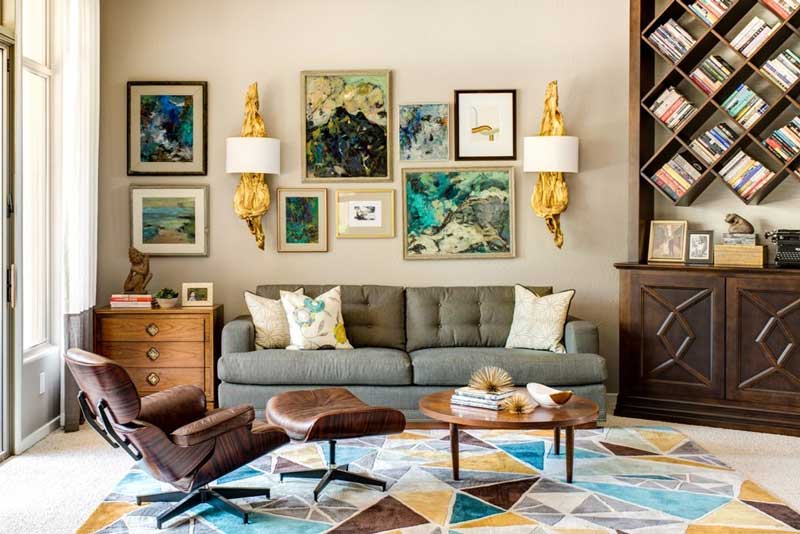
Although dominated by brown, the interior design of a mid century modern living room can also appear brighter. Most of the furniture used is brown, but it can still look shiny because of the triangular patterned carpet in light blue and orange colors.
The choice of artistic wall colors also contributes to the bright atmosphere. If you want to add something unique to the interior design of this room, you can use cabinet and bookshelves.
10. Dominated by gray color
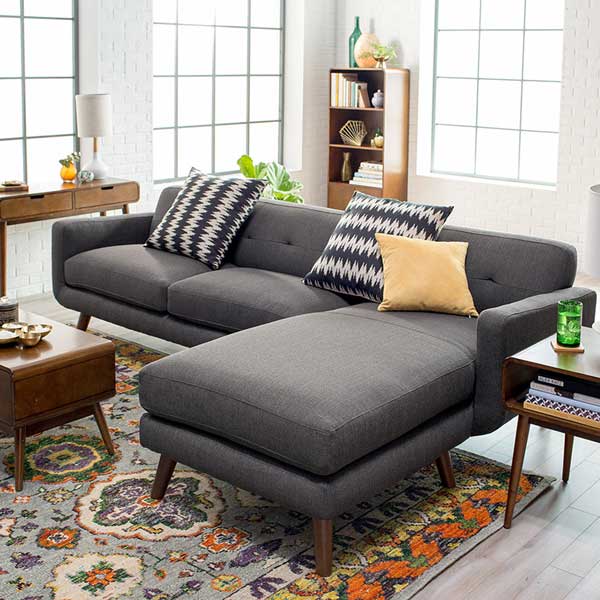
The mid century living room decor that is dominated by gray color will looks beautiful despite it is not having many decorations. The furniture used in the interior design of the living room has a diverse form. With the touch of gold metal ornaments, it is good enough to beautify the interior design of the living room.
